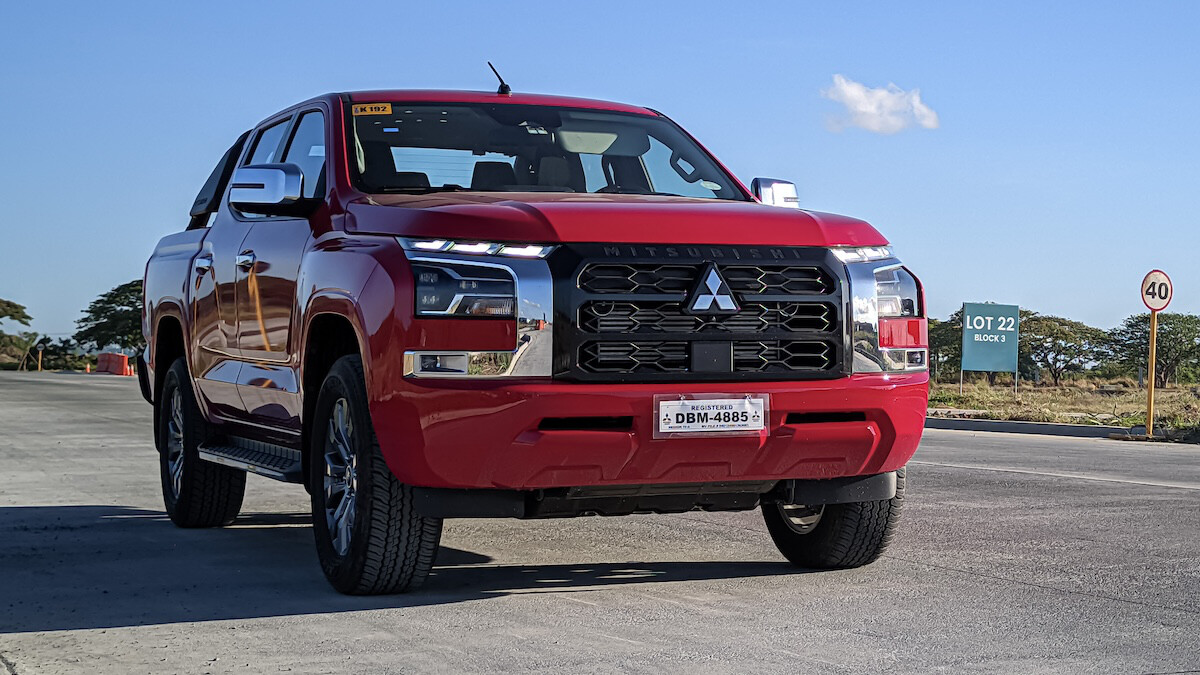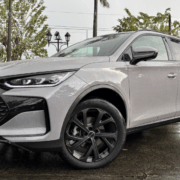Workhorse with a steed’s shine

If you’ve ever read books or watched films with a country or Old Western theme, you will have likely encountered a lot of horses.
This is hardly a surprise – there were no cars in the mid-to-late 1800s. And even in those days, these four-legged forms of transport had a bevy of classifications, similar to how we classify automobiles today.
In farms the length and breadth of those parts of the U.S., there were workhorses that tilled the land with plows and pulled carts filled with seeds, crops, and other goods. And then our strapping hero rides into town – with steely eyes that have seen and survived the Wild West – on his trusty steed.
The pickup truck is arguably the successor to the horse-drawn cart. And some 25 years ago, you got a deeply reliable tool that was as sparse and utilitarian as anything they had in the Southwestern United States.
But as the 21st century rolled in, pickups became symbols of prosperity and success, especially with the advent of car technology like common-rail direct injection, turbocharging, multi-speed transmissions and more sophisticated manufacturing techniques.
And so, we arrive at the 2024 Mitsubishi Triton GLS, which is top-of-the-line 4×2 variant in the Diamond Star brand’s pickup lineup. Is it just another tool for trade or would it also work for those who want the glamor of Old Western heroes?
Neat appearance
Having already tested the top-spec Triton Athlete, I found noticeable differences with the design of the GLS.
Gone are the sizeable overfenders and generous amounts of gloss-black trim, replaced with shiny chrome. It’s a case of form following function, but the gloss-black front grill, steel sports bar and gray 18-inch alloy wheels work to make simplicity attractive, especially in combination with the eye-popping Red Solid paint.
The Triton’s front end is very easy to distinguish from other pickups, particularly the high-mounted LED daytime running lights with LED headlights, framed by the bracket-shaped chrome accents. But as with the Athlete variant, the rear end of the GLS could have been more attractive, as with Stradas past.
Nonetheless, pickup buyers would be delighted by the bed, measuring 1,555 millimeters long, 1,545 millimeters wide and 525 millimeters tall. The plastic bedliner is also a nice touch, given that it isn’t even available as standard in some of the Triton’s rivals.
Comfortable cabin
Step inside the Triton GLS and you get a roomy cabin that is comparable with other pickups in its price range.
There is leather on the steering wheel, dashboard and door cards. But the cloth upholstery isn’t as plush as in rivals like the Nissan Navara, while the hard and scratchy plastics take away from what should be a premium variant.
However, the seats offers superb support, while the nine-inch touchscreen infotainment system with wireless Apple CarPlayand Android Auto is a ‘huuuuge’ (as a recently re-elected U.S. President would say) upgrade from the nasty unit in previous Mitsubishis. The dual-zone climate control with dedicated switches is also very powerful, easily reaching the rear passengers.
Although I am not a big fan of using leviathans like pickups as daily drivers, the Triton GLS is made much more liveable with its all-around parking sensors, which automatically engage the clear 360-degree camera when these detect a hazard or obstacle.
And quite impressively for a pickup, you get active safety features like forward collision mitigation system with pedestrian detection, blindspot warning system with lane change assist, lane departure warning and rear cross traffic alert.
But given that the Triton GLS already has a radar suite to rival fighter jets, the omission of the highly convenient and potentially life-saving adaptive cruise control (standard in the Toyota Hilux Conquest 4×2) is bizarre. And while you do get driver, driver’s knee and passenger airbags as standard, the side and curtain airbags from the Athlete model should be here as well.
Impressive fuel economy
Where the Triton leapfrogs ahead of its antiquated rivals like the Hilux and Navara is what’s under the hood.
Like the Triton Athlete, the GLS is powered by Mitsubishi’s latest 2.4-liter 4N16 inline-4 turbodiesel engine with twin cams and 16 valves controlled by the highly effective MIVEC variable-valve timing system.
But unlike its pricier and more powerful sibling, this motor only gets one water-cooled turbocharger for a total output of 180 horsepower and 430 Newton-meters of torque. Given that the GLS is 170 kilograms lighter than the Athlete, the lack of a second turbo isn’t noticeable except as you near the 4,000 rpm redline.
Nonetheless, this horse has a lot more heave than its 4×2 rivals, all while offering class-leading refinement and truly exemplary fuel economy – 9 to 12 kilometers per liter in the city and 17 to 20 kilometers per liter on the expressway. The brakes are also very strong, albeit controlled by a slightly spongy pedal.
And while the suspension is absolutely spot-on for a pickup, the body jiggles too much over bumps. In addition, the six-speed automatic transmission offers reasonable responsiveness at the expense of noticeable shift shock, especially when downshifting.
Something I really do miss from the Triton Athlete is its excellent electric power steering (EPS) – the hydraulic unit in the GLS is on the heavy side, without offering much more feel. I would like EPS to be standard in all Triton variants, which could further improve the stellar fuel consumption.
Top of the class
Quite simply, the Triton GLS 4×2 AT is the best pickup in its category.
At P1,582,000, it heavily undercuts many of its older rivals, while offering much more in terms of performance and fuel efficiency. It also helps that Mitsubishi Motors has a well-established reputation for un-burstable build quality and proven after-sales support.
And at this price, this pickup is a compelling alternative to traditional compact sedans and crossovers, especially if you live somewhere where the Triton’s hardy construction and 222-millimeter ground clearance are immensely useful.
In effect, the Triton GLS’ mix of utilitarian practicality and impressive refinement make this “horse” a viable daily ride, whether out on the wild fields or the mean streets. You may not necessarily look as cool as an Old Western hero, but you can feel good knowing that this steed can haul just as capably as it hauls a**.




















